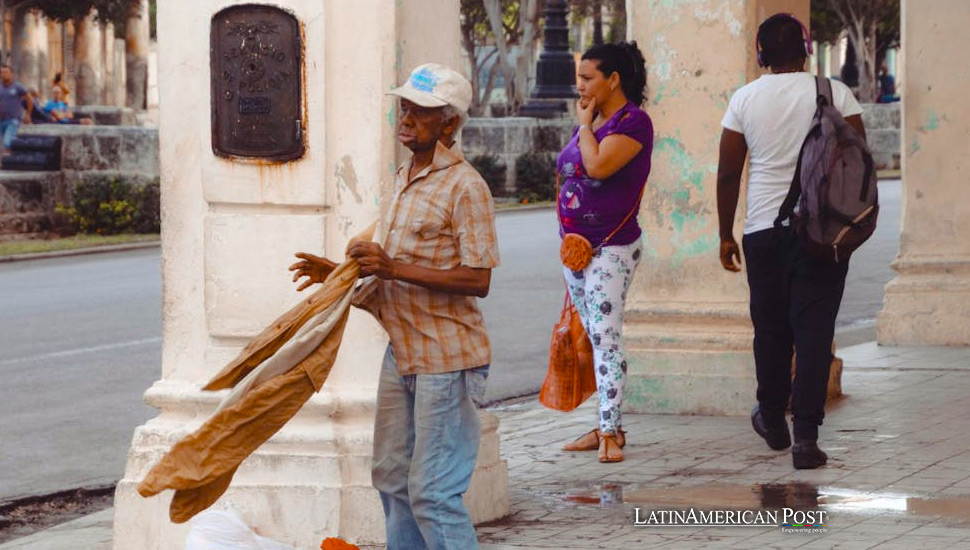Confronting Inequality in Latin America and the Caribbean

The stark divide between the wealthiest 10% and the poorest in Latin America and the Caribbean demonstrates the region’s profound inequality. Academics and sociologists express concern over the slow pace of change, calling for decisive action to address this enduring challenge.
Unveiling Inequality’s Long Shadow
In the vibrant mosaic of Latin America and the Caribbean, a shadow of inequality looms, casting a long pall over the region’s rich cultural and historical landscape. With the wealthiest 10% of the population earning 12 times more than the poorest 10%, this region is the most unequal in the world. This alarming disparity was the focal point of discussions during the “Confronting Inequality in Latin America and the Caribbean” session at the 64th Annual Meeting of the Board of Governors of the Inter-American Development Bank (IDB) in Punta Cana, Dominican Republic.
The grim reality that one in every five residents of the region is classified as poor underscores the urgency of the situation. Stanley Bailey, a researcher from the University of California in Irvine, emphasizes the distinction between poverty and inequality. He argues that the issue is about more than just the resources at one’s disposal but the collective will to address the imbalance. Bailey points out that policy effectiveness is less about a country’s wealth and more about its willingness to enact change. He highlights Brazil’s commitment to tertiary education programs to reduce inequality across racial and gender lines—a stark contrast to the approach in the United States, despite its status as the region’s wealthiest country.
“Limiting Opportunities through Unequal Investment”
Eduardo Levy-Yeyati from Argentina’s Universidad Torcuato Di Tella supports this view, noting that schools in poorer areas receive less investment, thereby limiting opportunities for youth in those communities. Although progress was made between 1990 and 2014, efforts to reverse inequality have since stalled, according to Francisco Ferreira of the London School of Economics. Ferreira advocates for increased investment in children from underprivileged areas to bridge the gap.
In countries such as Colombia, Chile, and Uruguay, the wealth disparity is stark, with approximately 1% of the population controlling between 37% and 40% of the total wealth. At the same time, the poorest half possesses merely a tenth. Ferreira stresses that inequalities in Latin America are multifaceted and interconnected, with significant disparities based on skin color—whites often occupy higher echelons of opportunity and investment. At the same time, blacks and Indigenous people are relegated to lower positions.
The analysis, a collaborative effort involving the IDB, the London School of Economics, Yale University, the Institute for Fiscal Studies, and academics from over a dozen universities, also revealed that inequality can be “inherited.” Factors such as being born into a low-income neighborhood, belonging to an ethnic minority, or having parents with limited education or low-paying jobs all contribute to perpetuating inequality.
In response, speakers urged governments to abandon outdated assumptions and embrace a shift in mindset, particularly in education. Economically, addressing inequality requires innovative policies that cater to workers in informal contracts, offering tailored fiscal and pension systems that promote productive economic growth.
This call to action resonates across Latin America and the Caribbean, where the historical context of colonialism, slavery, and indigenous displacement has long shaped the region’s socio-economic landscape. The legacy of these injustices continues to influence current disparities, making the fight against inequality not only an economic issue but a moral imperative.
A Multifaceted Approach to Complex Challenges
As the region grapples with this complex challenge, it becomes clear that a multifaceted approach is necessary. Enhancing educational opportunities, reforming fiscal policies, and ensuring equitable access to resources are crucial steps. Moreover, fostering an environment encouraging entrepreneurship and innovation can stimulate economic growth and offer new pathways out of poverty.
The discourse on inequality in Latin America and the Caribbean also calls to recognize the power of community and grassroots movements. Throughout history, these groups have advocated for social change and justice. Their continued involvement and empowerment are essential in crafting policies that reflect the needs and aspirations of all citizens.
Also read: Digital Transformation is Driving Economic Growth in Latin America Amidst Challenges
Addressing inequality in Latin America and the Caribbean requires a concerted effort that spans government, civil society, and the private sector. It demands a departure from traditional paradigms towards inclusive, sustainable, and reflective strategies of the region’s diverse population. By harnessing the collective will and embracing innovative solutions, there is hope for building societies where equality and opportunity are not just ideals but realities for all. The journey is undoubtedly long and fraught with challenges. Still, the potential for transformation offers hope for a more equitable future in this richly diverse and dynamic region.




